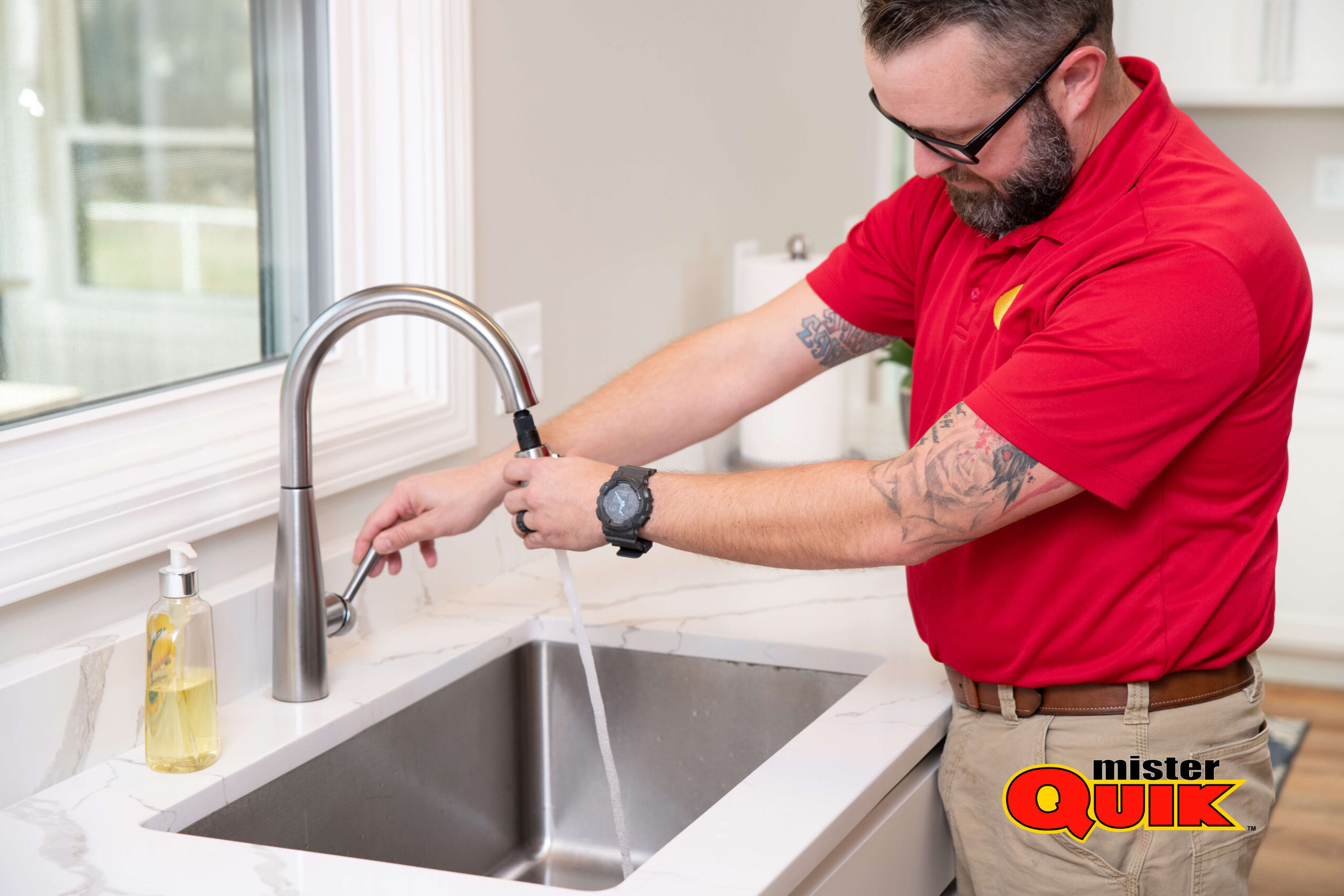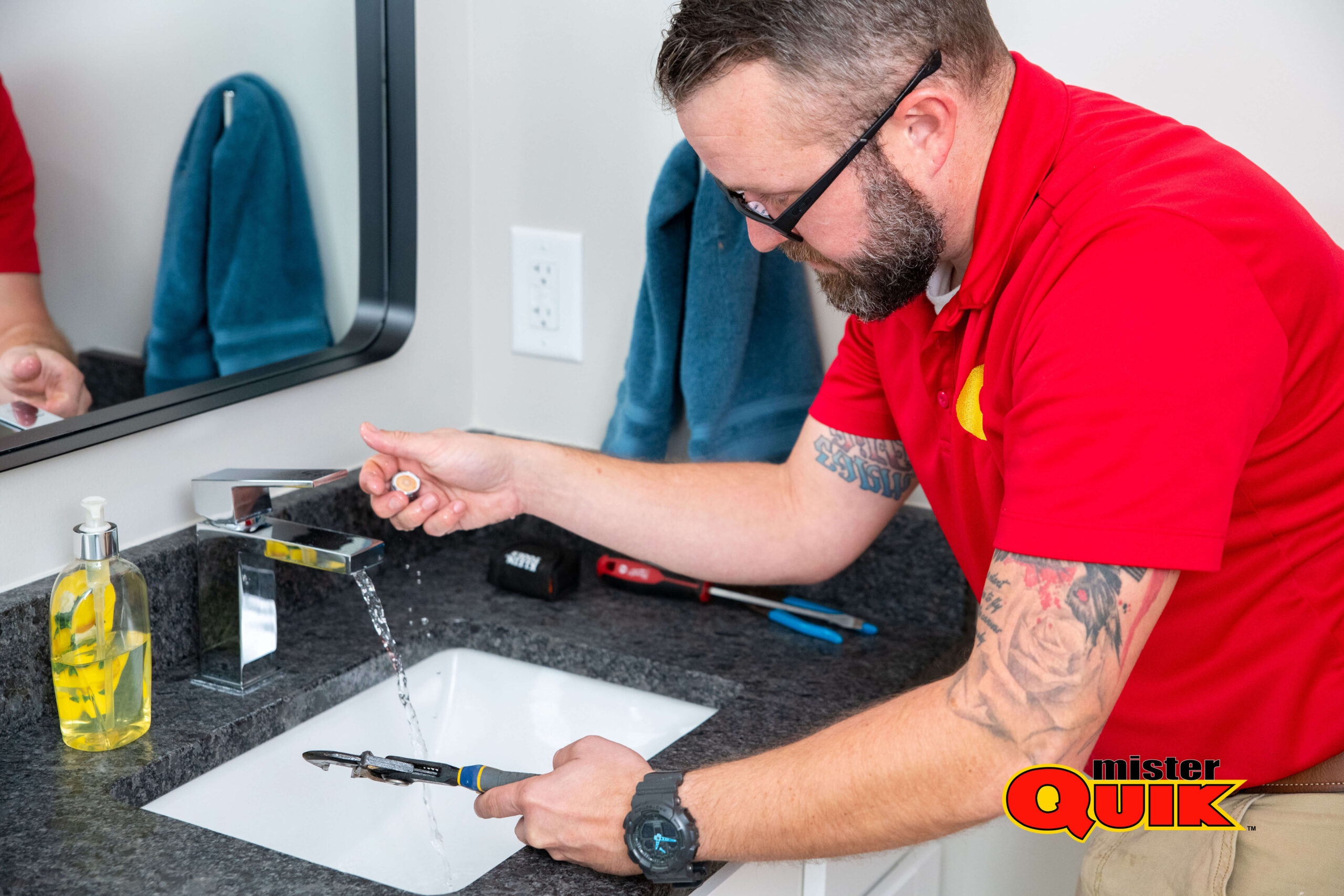Plainfield Water Heater Flushes

Is It Time For A Water Heater Flush?
Living in the City of Plainfield, maintaining your water heater is crucial for optimal performance and efficiency. One often-overlooked aspect of water heater maintenance is the periodic flushing of the system. If you’re unfamiliar with the process, it’s essential to understand when and how to perform a water heater flush. In this guide, we will explore the signs indicating that it’s time for a flush and provide you with step-by-step instructions on troubleshooting and conducting a water heater flush in your home.
Signs Your Water Heater Needs Flushing:
- Reduced Hot Water Output: If you notice a decrease in the amount of hot water your system is producing, it might be a sign of sediment buildup.
- Strange Noises: Unusual popping or rumbling sounds coming from your water heater could indicate sediment accumulation, hindering its efficiency.
- Discolored Water: Rusty or muddy water flowing from your taps signals potential rust and sediment inside the tank.
How to Troubleshoot for Flushing:
- 1. Check Water Temperature: A sudden drop in water temperature could indicate sediment blocking the heating element. Verify the thermostat settings before proceeding.
- 2. Inspect for Leaks: Before flushing, ensure there are no visible leaks around the water heater. Address any leaks promptly to avoid complications during the process.
- 3. Review Manufacturer Guidelines: Refer to your water heater’s manual for specific instructions and precautions related to flushing. Each system may have unique requirements.
Step-by-Step Guide for Water Heater Flushing:
- Turn Off the Heater: Switch off the power supply to the water heater to ensure safety during the flushing process.
- Connect a Hose: Attach a garden hose to the drain valve located at the bottom of the tank. Place the other end of the hose in a drain or outside to avoid a mess.
- Open the Pressure Relief Valve: Lift the pressure relief valve to allow air into the tank, facilitating a smooth flow during flushing.
- Drain the Tank: Open the drain valve and let the water flow out. Be prepared for sediment and debris, which may appear initially.
- Flush Until Clear: Continue flushing until the water runs clear, indicating the removal of sediment.
- Close Valves and Refill: Shut off the drain valve and pressure relief valve. Turn on the water supply to refill the tank.
- Restore Power: Once the tank is filled, switch the power back on, and your water heater should be ready to resume normal operation.
Regularly flushing your water heater is a simple yet effective way to maintain its efficiency and prolong its lifespan. By paying attention to signs of sediment accumulation and following the step-by-step guide provided, you can ensure your water heater in Plainfield functions optimally, providing you with a consistent supply of hot water. Remember, a well-maintained water heater not only enhances comfort but also saves energy and reduces the risk of costly repairs.
Importance Of Flushing Water Heater
Ensuring the optimal performance and longevity of your water heater system is essential for the comfort and functionality of your home. One often overlooked maintenance task that plays a crucial role in achieving this is flushing the water heater. As a resident of Plainfield, it’s imperative to understand the importance of regular water heater flushing to avoid potential issues and maximize efficiency.
Over time, minerals and sediment can accumulate at the bottom of your water heater tank, hindering its efficiency and potentially causing corrosion. Flushing helps remove these deposits, preventing clogs and maintaining optimal performance.
A buildup of sediment can insulate the heating element in your water heater, forcing it to work harder to heat the water. Flushing removes this barrier, allowing your heater to operate more efficiently and reducing energy consumption.
Regular flushing helps prevent corrosion and rust within the tank, which can lead to leaks and premature failure. By removing sediment and minerals, you can extend the lifespan of your water heater, saving you money on costly repairs or replacements.
Sediment buildup can not only affect the performance of your water heater but also impact the quality of your water. Flushing removes contaminants, ensuring that your water remains clean and safe for use.
Before flushing, turn off the power supply to your water heater to avoid any accidents or damage.
Connect a hose to the drain valve at the bottom of the tank and run it to a nearby drain or outside. Open the valve and allow the water to drain completely.
Once drained, close the valve and turn on the cold water supply to flush out any remaining sediment. Repeat this process until the water runs clear.
Close the drain valve, turn on the power supply, and refill the tank. Once the tank is full, you can restart your water heater and resume normal operation.
Expect a pro to charge you between $75 and $200 to come to your home to flush your water heater, depending on where you live. While this cost deters many homeowners from performing this annual maintenance, it can extend the water heater’s lifespan by years, making it worth the additional cost.
You should flush your water heater once every year. If you live in an area with extremely hard water, consult your plumber for a recommendation on a customized maintenance plan. Tip: The buildup of sediment in the tank can reduce your water heater’s energy efficiency and also clog your water lines.
YES! Water heaters – both tanked and tankless varieties – should be flushed at regular intervals. With this proactive maintenance step, the heater runs efficiently for a longer period of time, and service issues are less frequent.
In order to flush your water heater, you’ll need to turn on the cold water spout and let it run for a few minutes. Keep a close eye on the water coming through the hose. Again, you’re watching for the water to run clear. Once it does, you’re all done with the flushing process.
Lower Water Pressure – If a water heater isn’t flushed, sediment builds up in the tank, in the pipes, and in your plumbing fixtures! This can ultimately lead to low water pressure if not addressed, and shorten the lifespan of your plumbing fixtures.
How Do You Flush Your Hot Water Heater?
Flushing your hot water heater is a crucial maintenance task that ensures the efficient operation and longevity of the system. Living in the City of Plainfield, it’s essential to understand the step-by-step process of flushing your water heater, even if you haven’t had prior experience with it. Regular flushing helps remove sediment buildup, prevents corrosion, and maintains the heater’s energy efficiency. In this comprehensive guide, we’ll walk you through the necessary steps to flush your hot water heater successfully.


Step-by-Step Guide:
- Turn Off the Power: Begin by turning off the power supply to the water heater. If it’s an electric heater, switch off the breaker; for gas heaters, turn the thermostat to the “pilot” setting.
- Shut Off the Water Supply: Locate the cold water supply valve near the top of the water heater and turn it off. This prevents the introduction of new water while you are flushing the system.
- Attach a Hose: Connect a garden hose to the drain valve located near the bottom of the heater. Ensure the other end of the hose is positioned in a floor drain, utility sink, or outside where the hot water won’t cause damage.
- Open the Pressure Relief Valve: To allow for a faster and smoother flow, open the pressure relief valve at the top of the heater. Be cautious as the water may be hot.
- Drain the Tank: Open the drain valve and let the water flow out through the hose. This will carry away sediment and debris that has settled at the bottom of the tank.
- Flush Until Clear: Allow the water to run until it appears clear. This ensures that all sediment and impurities have been flushed out.
- Close the Drain Valve and Pressure Relief Valve: Once the water runs clear, close the drain valve followed by the pressure relief valve.
- Refill the Tank: Turn on the cold water supply valve to allow the tank to refill. Keep the hot water faucet in your house open until a steady stream of water flows, indicating that the air in the tank has been purged.
- Restore Power: For electric heaters, restore power by turning on the breaker. For gas heaters, set the thermostat back to the desired temperature.
Regularly flushing your hot water heater in Plainfield is a wise investment in the longevity and efficiency of your system. Following this step-by-step guide will help you navigate the process with ease, ensuring that your water heater continues to provide a reliable supply of hot water for your household. Make it a routine to flush your water heater annually for optimal performance and to prevent potential issues down the line.
Why Should I Flush My Water Tank Periodically?
Regular maintenance of your water tank is crucial for ensuring the quality and safety of your water supply. As a resident of Plainfield, it’s essential to understand why flushing your water tank periodically is necessary.







Over time, minerals and sediment accumulate at the bottom of your water tank, compromising its efficiency.







Sediment acts as an insulator, making it harder for your water heater to heat water effectively.




A compromised water heater requires more energy to operate, leading to higher utility bills.







Sediment buildup can also contribute to corrosion within the tank, shortening its lifespan and potentially causing leaks.







Stagnant water in your tank provides a breeding ground for bacteria like Legionella, which can cause respiratory illnesses if ingested.




Accumulated sediment and bacteria can lead to unpleasant odors and a metallic taste in your water, making it unpalatable and potentially harmful to consume.







Flushing your water tank removes sediment and bacteria, ensuring clean, fresh-tasting water for your household.







Regular maintenance prevents corrosion and sediment buildup, prolonging the life of your water heater.




A clean water tank operates more efficiently, reducing energy consumption and lowering your utility bills.
In conclusion, flushing your water tank periodically is essential for maintaining water quality, extending the lifespan of your equipment, and safeguarding your health. As a resident of Plainfield, prioritizing this maintenance task will not only save you money in the long run but also ensure that your home's water system operates smoothly and safely. Don't overlook the importance of this simple yet crucial maintenance step for your peace of mind and well-being.
What Happens If I Don’t Flush My Water Heater?
Living in the City of Plainfield, it’s crucial to understand the importance of regular maintenance for household appliances, particularly your water heater. Many homeowners overlook the necessity of flushing their water heaters, and neglecting this crucial task can lead to a cascade of issues. If you’ve never flushed your water heater before, it’s essential to grasp the potential consequences and the benefits of incorporating this routine maintenance into your home care regimen.
1.Consequences of Not Flushing Your Water Heater:
- Sediment Buildup: Over time, minerals and sediment naturally accumulate at the bottom of your water heater tank. If left unaddressed, this sediment can solidify, forming a layer that reduces the heater’s efficiency.
- Decreased Efficiency: Sediment buildup forces your water heater to work harder, decreasing its overall efficiency. This not only raises energy costs but also shortens the appliance’s lifespan.
- Corrosion Risk: Sediment accumulation increases the likelihood of corrosion, particularly in gas water heaters. This corrosion can lead to leaks and other serious structural damage.
2.Potential Health and Safety Risks:
- Bacterial Growth: Stagnant water in the tank can become a breeding ground for harmful bacteria. This poses a risk to your household’s health as these bacteria can contaminate the hot water supply.
- Foul Odors: The presence of bacteria in the water heater can result in unpleasant odors emanating from your taps, affecting both the quality and comfort of your water usage.
- Increased Energy Consumption: As the heater struggles to maintain its efficiency, your energy bills may skyrocket due to increased consumption. Regular flushing helps maintain optimal performance and keeps costs in check.
3.Benefits of Regular Water Heater Flushing:
- Extended Lifespan: Flushing your water heater removes accumulated sediment, preventing damage and prolonging the appliance’s lifespan.
- Improved Efficiency: By eliminating sediment, your water heater operates more efficiently, reducing energy consumption and lowering utility bills.
- Clean, Safe Water: Regular flushing ensures the water in your tank remains free from contaminants, providing your household with a safe and reliable hot water supply.
In Plainfield, where efficient home systems are crucial, neglecting to flush your water heater can lead to a range of problems, from decreased efficiency to potential health risks. Regular maintenance, including flushing, is an investment in the longevity and performance of your water heater. By incorporating this simple yet vital task into your routine, you not only ensure a steady supply of clean and safe hot water but also contribute to the overall well-being of your household and the longevity of your water heating system.
Water Heater Flushes In Plainfield Cost Guide
Maintaining the efficiency of your home’s water heater is crucial for a seamless daily routine. Regular maintenance, such as water heater flushing, plays a pivotal role in ensuring optimal performance and longevity. If you’re new to this process, understanding the costs associated with water heater flushing services is essential. This comprehensive guide will provide you with a detailed breakdown of the expenses involved, helping you make informed decisions about your home’s water heating system.
The initial cost typically includes a service fee, covering the professional assessment of your water heater system. This fee varies based on the provider and can range from $50 to $100.
Water heater flushing involves draining and cleaning the tank, a process that demands expertise. Expect labor costs ranging between $75 and $150, depending on the complexity and size of your system.
Additional costs may be incurred for materials such as flushing agents, hose connections, and replacement parts. These typically fall within the range of $20 to $50, depending on the specific requirements of your water heater.
Larger water heaters generally incur higher costs due to increased labor and material requirements.
Older or more complex systems may demand additional time and effort, affecting overall service charges.
:Regular flushing may be less expensive than infrequent or neglected maintenance, as accumulated sediment can make the process more labor-intensive.
In the City of Plainfield, understanding the cost dynamics of water heater flushing services is paramount for responsible homeownership. While prices may vary, this guide provides a comprehensive overview of the key factors influencing the expenses associated with this essential maintenance task. By considering these details, you can make informed decisions to ensure the longevity and efficiency of your home’s water heating system. Don’t let uncertainty about costs hinder the performance of your water heater – take proactive steps to maintain a reliable and efficient home infrastructure.
Troubleshoot Checklist:
- Verify Thermostat Settings: Check for a sudden drop in water temperature, ensuring sediment isn’t blocking the heating element.
- Assess Hot Water Output: If hot water output is reduced, it may signal sediment accumulation, prompting a flush.
- Leak Check: Before flushing, inspect the water heater for leaks to prevent complications during the process.
- Consult Manufacturer Guidelines: Review the water heater’s manual for specific flushing instructions and precautions.
- Turn Off Power: Switch off the power supply to ensure safety during flushing.
- Connect Hose and Open Valves: Attach a hose to the drain valve, lift the pressure relief valve, and open both valves to drain the tank.
- Drain Until Clear: Continue flushing until the water runs clear, indicating sediment removal.
- Close Valves and Refill: Shut off the drain and pressure relief valves, then turn on the water supply to refill the tank.
- Restore Power: Once filled, switch the power back on to resume normal water heater operation.
- Schedule Annual Flush: Incorporate water heater flushing into your annual home maintenance routine for optimal performance and longevity.
- Note: Regular maintenance enhances comfort, saves energy, and reduces the risk of costly repairs.









